Switch CISCO SG350-10P-K9
Switch CISCO SG350-10P-K9
KHUYẾN MÃI
![]() Miễn phí hướng dẫn sử dụng và cài đặt từ xa cho khách hàng ở xa.
Miễn phí hướng dẫn sử dụng và cài đặt từ xa cho khách hàng ở xa.
![]() Miễn phí giao hàng, cài đặt và hướng dẫn sử dụng khu vực HCM.
Miễn phí giao hàng, cài đặt và hướng dẫn sử dụng khu vực HCM.
Chính sách bán hàng
SG350-10P là bộ switch quản lý của thương hiệu Cisco, được thiết kế chuyên để sử dụng cho các doanh nghiệp lớn với đầy đủ tính năng cao cấp và bảo mật. Cisco SG350-10P được trang bị 8 cổng LAN 1Gb/s, 2 cổng mini-GBIC với băng thông switch lên tới 20Gb/s và dung lượng truyền tải gói tin đạt 14.88mp/s, đem lại khả năng chịu tải rất tốt.
Ngoài ra tất cả các cổng LAN của SG350-10P đều có khả năng hỗ trợ tính năng PoE, với tổng công suất lên tới 62W, hỗ trợ rất tốt cho các thiết bị yêu cầu việc cấp nguồn thông qua cổng cắm LAN.
Về phần tính năng, SG350-10P hỗ trợ rất nhiều tính năng hỗ trợ cho việc quản lý hạ tầng mạng như giao diện dễ sử dụng, có khả năng chia sẻ thông tin với các thiết bị Cisco khác trong hệ thống, SNMP, VLAN, STP,.... cùng với các tính năng bảo mật mạnh mẽ như ACL, ARP, SNMPv3, TACACS+, Port security, ngăn chặn DoS.... đem lại cho người quản trị mạng những công cụ cần thiết để quản lý một hệ thống mạng.
Một đặc điểm nổi bật khác của SG350-10P là khả năng hỗ trợ định tuyến và tính năng QoS hỗ trợ trong việc kết nối các khu vực khác nhau trong hệ thống mạng và quản lý luồng dữ liệu.
SG350-10P được trang bị rất nhiều lỗ thoát hơi nằm ở hai bên hông nhằm ổn định nhiệt độ hoạt động, cho phép SG350-10P có khả năng hoạt động ổn định trong môi trường có nhiệt độ giao động từ 0 tới 50 độ C.
10-Port Gigabit PoE Managed Switch CISCO SG350-10P-K9-EU
- 8 10/100/1000 PoE ports with 62W power budget + 2 Combo mini-GBIC ports.
- Performance: Switching capacity 20 Gbps, Forwarding rate 14.88 mpps wire-speed performance.
- Layer 2: Port grouping up to 8 groups, up to 8 ports per group with 16 candidate ports for each (dynamic) 802.3ad link aggregation.
- Layer 3: IPv4 routing Wirespeed routing of IPv4 packets up to 1K static routes and up to 128 IP interfaces, Classless Interdomain Routing (CIDR) Support for CIDR.
- PoE: PoE Power Budget: 62 W, Number of Ports That Support PoE: 8.
- QoS (Quality of Service): Priority levels 8 hardware queues, Scheduling Strict priority and weighted round-robin (WRR) Queue assignment based on DSCP and class of service (802.1p/CoS).
| Model | SG350-10P-K9-EU |
| Performance | |
| Switching capacity and forwarding rate | Capacity in Millions of Packets per Second (mpps) (64-byte packets): 14.88 |
| All switches are wire speed and nonblocking | Switching Capacity in Gigabits per Second (Gbps): 20 |
| USB slot | For file-management purposes |
| Total System Ports | 10 Gigabit Ethernet |
| RJ-45 Ports | 8 Gigabit Ethernet |
| Combo Ports (RJ‑45 + SFP) | 2 Gigabit Ethernet combo |
| Jumbo frames | Frame sizes up to 9K (9216) bytes supported on 10/100 and Gigabit interfaces |
| MAC table | Up to 16K (16384) MAC addresses |
| Layer 2 Switching | |
| Spanning Tree Protocol | Standard 802.1d Spanning Tree support Fast convergence using 802.1w (Rapid Spanning Tree [RSTP]), enabled by default 8 instances are supported Multiple Spanning Tree instances using 802.1s (MSTP) |
| Port grouping | Support for IEEE 802.3ad Link Aggregation Control Protocol (LACP): Up to 8 groups, Up to 8 ports per group with 16 candidate ports for each (dynamic) 802.3ad link aggregation |
| VLAN | Support for up to 4096 VLANs simultaneously Port-based and 802.1Q tag-based VLANs MAC-based VLAN Management VLAN Private VLAN Edge (PVE), also known as protected ports, with multiple uplinks Guest VLAN Unauthenticated VLAN Dynamic VLAN assignment via RADIUS server along with 802.1x client authentication CPE VLAN |
| Voice VLAN | Voice traffic is automatically assigned to a voice-specific VLAN and treated with appropriate levels of QoS Auto voice capabilities deliver networkwide zero-touch deployment of voice endpoints and call control devices |
| Multicast TV VLAN | Multicast TV VLAN allows the single multicast VLAN to be shared in the network while subscribers remain in separate VLANs (also known as MVR) |
| Q-in-Q VLAN | VLANs transparently cross a service provider network while isolating traffic among customers |
| Generic VLAN Registration Protocol (GVRP)/Generic Attribute Registration Protocol (GARP) | Protocols for automatically propagating and configuring VLANs in a bridged domain |
| Unidirectional Link Detection (UDLD) | UDLD monitors physical connection to detect unidirectional links caused by incorrect wiring or cable/port faults to prevent forwarding loops and blackholing of traffic in switched networks |
| Dynamic Host Configuration Protocol (DHCP) Relay at Layer 2 | Relay of DHCP traffic to DHCP server in different VLAN; works with DHCP Option 82 |
| Internet Group Management Protocol (IGMP) versions 1, 2, and 3 snooping | IGMP limits bandwidth-intensive multicast traffic to only the requesters; supports 1K multicast groups (source-specific multicasting is also supported) |
| IGMP Querier | IGMP querier is used to support a Layer 2 multicast domain of snooping switches in the absence of a multicast router |
| Head-Of-Line (HOL) blocking | HOL blocking prevention |
| Loopback Detection | Loopback detection provides protection against loops by transmitting loop protocol packets out of ports on which loop protection has been enabled. It operates independently of STP |
| Jumbo frames | Up to 9K (9216) bytes |
| Layer 3 | |
| IPv4 routing | Wirespeed routing of IPv4 packets Up to 1K static routes and up to 128 IP interfaces |
| IPv6 routing | Wirespeed routing of IPv6 packets |
| Classless Interdomain Routing (CIDR) | Support for CIDR |
| Layer 3 Interface | Configuration of Layer 3 interface on physical port, LAG, VLAN interface, or loopback interface |
| DHCP relay at Layer 3 | Relay of DHCP traffic across IP domains |
| User Datagram Protocol (UDP) relay | Relay of broadcast information across Layer 3 domains for application discovery or relaying of bootP/DHCP packets |
| DHCP Server | Switch functions as an IPv4 DHCP server serving IP addresses for multiple DHCP pools/scopes Support for DHCP options |
| Security | |
| Secure Shell (SSH) Protocol | SSH is a secure replacement for Telnet traffic. SCP also uses SSH. SSH v1 and v2 are supported |
| Secure Sockets Layer (SSL) | SSL support: Encrypts all HTTPS traffic, allowing highly secure access to the browser-based management GUI in the switch |
| IEEE 802.1X (Authenticator role) | 802.1X: RADIUS authentication and accounting, MD5 hash; guest VLAN; unauthenticated VLAN, single/multiple host mode and single/multiple sessions Supports time-based 802.1X Dynamic VLAN assignment |
| Web-based authentication | Web based authentication provides network admission control through web browser to any host devices and operating systems |
| STP Bridge Protocol Data Unit (BPDU) Guard | A security mechanism to protect the network from invalid configurations. A port enabled for BPDU Guard is shut down if a BPDU message is received on that port |
| STP Root Guard | This prevents edge devices not in the network administrator’s control from becoming Spanning Tree Protocol root nodes |
| DHCP snooping | Filters out DHCP messages with unregistered IP addresses and/or from unexpected or untrusted interfaces. This prevents rogue devices from behaving as DHCP Servers |
| IP Source Guard (IPSG) | When IP Source Guard is enabled at a port, the switch filters out IP packets received from the port if the source IP addresses of the packets have not been statically configured or dynamically learned from DHCP snooping. This prevents IP Address Spoofing |
| Dynamic ARP Inspection (DAI) | The switch discards ARP packets from a port if there are no static or dynamic IP/MAC bindings or if there is a discrepancy between the source or destination addresses in the ARP packet. This prevents man-in-the-middle attacks |
| IP/MAC/Port Binding (IPMB) | The preceding features (DHCP Snooping, IP Source Guard, and Dynamic ARP Inspection) work together to prevent DOS attacks in the network, thereby increasing network availability |
| Secure Core Technology (SCT) | Makes sure that the switch will receive and process management and protocol traffic no matter how much traffic is received |
| Secure Sensitive Data (SSD) | A mechanism to manage sensitive data (such as passwords, keys, and so on) securely on the switch, populating this data to other devices, and secure autoconfig. Access to view the sensitive data as plaintext or encrypted is provided according to the user-configured access level and the access method of the user |
| Layer 2 isolation Private VLAN Edge (PVE) with community VLAN | PVE (also known as protected ports) provides Layer 2 isolation between devices in the same VLAN, supports multiple uplinks |
| Port security | The ability to lock source MAC addresses to ports and limits the number of learned MAC addresses |
| RADIUS/TACACS+ | Supports RADIUS and TACACS authentication. Switch functions as a client |
| Storm control | Broadcast, multicast, and unknown unicast |
| RADIUS accounting | The RADIUS accounting functions allow data to be sent at the start and end of services, indicating the amount of resources (such as time, packets, bytes, and so on) used during the session |
| DoS prevention | Denial-Of-Service (DOS) attack prevention |
| ACLs | Support for up to 512 rules Drop or rate limit based on source and destination MAC, VLAN ID or IP address, protocol, port, Differentiated Services Code Point (DSCP)/IP precedence, TCP/UDP source and destination ports, 802.1p priority, Ethernet type, Internet Control Message Protocol (ICMP) packets, IGMP packets, TCP flag, time-based ACLs supported |
| Quality of Service | |
| Priority levels | 8 hardware queues |
| Scheduling | Strict priority and Weighted Round-Robin (WRR)Queue assignment based on DSCP and class of service (802.1p/CoS) |
| Class of service | Port based; 802.1p VLAN priority based; IPv4/v6 IP precedence/Type of Service (ToS)/DSCP based; Differentiated Services (DiffServ); classification and remarking ACLs, trusted QoS |
| Rate limiting | Ingress policer; egress shaping and rate control; per VLAN, per port, and flow based |
| Power over Ethernet (PoE) | |
| 802.3af PoE, 802.3at PoE+, and 60W PoE power are delivered over any of the RJ-45 ports within the listed power budgets | Switches support 802.3at PoE+, 802.3af, 60W PoE, and Cisco prestandard (older) PoE. Maximum power of 60W to any 10/100 or Gigabit Ethernet port for PoE+ supported devices and 15.4W for PoE supported devices, until the PoE budget for the switch is reached. The total power available for PoE per switch is as follows: Power Dedicated to PoE: 62W Number of Ports That Support PoE: 8 |
| PoE powered device and PoE passthrough | In addition to AC power, compact switch models can work as PoE powered devices and be powered by PoE switches connected to the uplink ports. The switch can also pass through the power to downstream PoE end devices if required Maximum of 60W can be drawn per uplink port if the peer PoE switch supports 60W PoE. When multiple uplink ports are connected to PoE switches, the power drawn from these ports is combined When AC power is connected and functioning properly, it will have priority over the PoE powered device function. The PoE powered device function will then act as a backup power source to the AC power. The PoE powered device function will be the primary power source for the switch if AC power is not connected |
| Power Option | AC power |
| Available PoE Power (W) | 62W |
| Can Switch Be Powered with Uplinks | Yes |
| Environmental | |
| Dimensions | 160 x 44 x 170 mm |
| Weight | 1.19 kg |


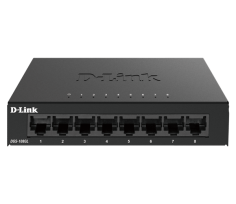
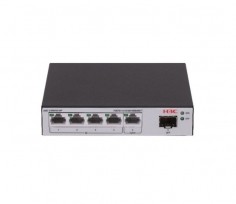

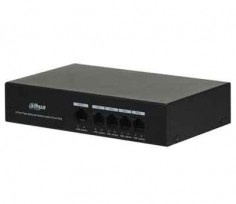

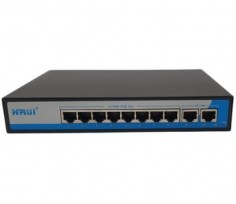
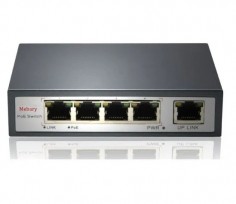
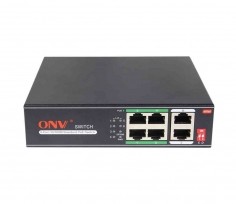
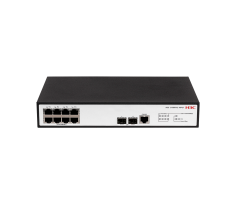
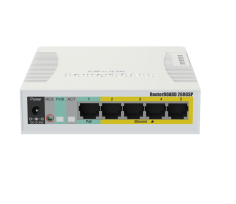

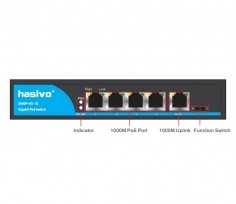
 0903020002
0903020002 Nhắn tin
Nhắn tin